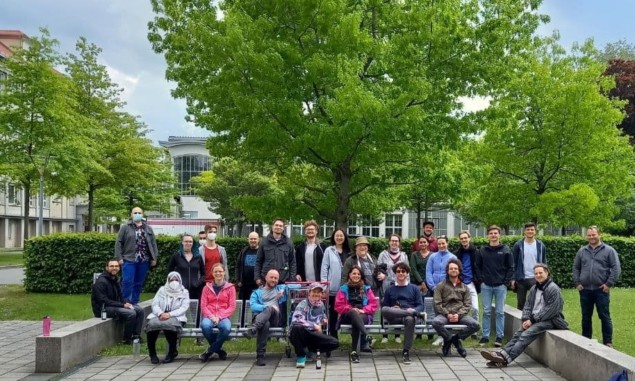
We typically think of a tumour as a rigid lump of cancerous cells; but how could such a rigid cluster invade its surrounding microenvironment? To answer this question, an international collaboration of researchers has combined computer simulations with mechanical measurements. Their findings, published in Nature Physics, demonstrate that a considerable percentage of cancer cells acquire a high degree of mechanical deformability to become more mobile, and consequently are able to enter dense surrounding tissue.
It is already recognized that cancer cells undergo dedifferentiation, a process in which they move towards a more disordered state with a softer cytoskeleton. However, cell aggregates are known to exhibit jamming, which prevents further spreading of cells. This highlights the mechanical impact of solid–fluid transitions on tissue bulk behaviour.
Furthermore, research has shown that the fluidity or rigidity of tumour cell clusters is regulated by cell unjamming. Cancer cells are also known to be highly mechanosensitive – they can mechanically adapt to their microenvironment.
“The paradox that in breast tumours, cells that become softer actually form a structure that is harder than the original tissue is only an apparent contradiction,” explains Joseph Käs from Leipzig University. “This effect is further enhanced because here, mainly very soft fat cells in the healthy breast are compared with cells that are softer than healthy epithelial cells, but still significantly harder than fat cells.”
Motivated by computer simulations performed by physicists at Northeastern University, the University of California, Santa Barbara and Syracuse University, Käs’s group investigated tissue explants from breast and cervical cancers using various techniques, including atomic-force-microscopy (AFM)-based bulk tissue rheology. Working in collaboration with a team of cancer researchers and pathologists at Leipzig University Hospital and Albert Einstein College of Medicine, they demonstrated the existence of a few solid islands of rigid cells, connected by mechanical stress bridges of soft, mobile cells.
Cell migration Simulations of an invading cell (green) moving through tissue containing both rigid (light blue) and soft (dark blue) cells. Top: the tissue is in a jammed, solid-like state and the invading cell is stuck and cannot move. Centre: in heterogeneous tissue the invading cell shows highly intermittent migration dynamics. Bottom: the tissue is in a fully unjammed, fluid-like state and the invading cell moves with relative ease. (Courtesy: Max Bi, Xinzhi Li)
AFM is a scanning probe-based microscopy technique with subnanometre resolution. In this study, the researchers used the technique to gain knowledge of mechanical parameters such as tumour cell elasticity across the live tumour explants. This enabled them to capture the local, heterogeneous distribution of tissue stiffness, as the AFM maps display both rigid (jammed) and soft (unjammed) regions.

Physics sheds light on how breast cancer spreads to bone
This structure was further confirmed by tracking vital cells across cancer cell spheroids. The researchers elucidate that this heterogeneous state stabilizes the tissue sufficiently to allow tumour growth, while providing flexibility for soft, motile cells to escape the tumour and consequently form metastases.
Thomas Fuhs, one of the lead authors of this study, is optimistic that their latest results add new insight into the mechanics of cancer cells and tumour tissue. More explicitly, whether the cells in a tumour remain completely jammed – as in healthy tissue – or are able to unjam and soften can make all the difference as to whether a tumour metastasizes or not.



